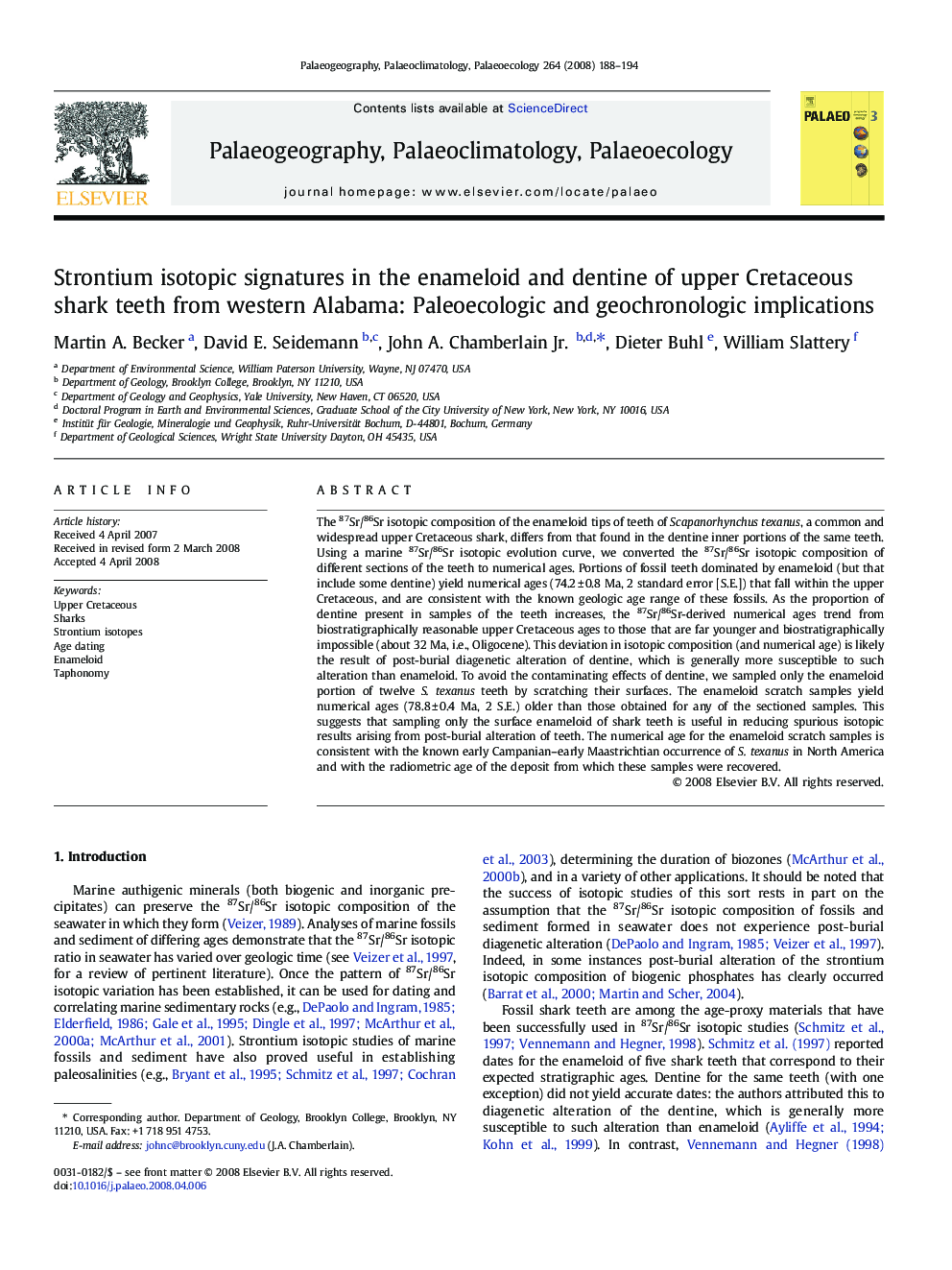| کد مقاله | کد نشریه | سال انتشار | مقاله انگلیسی | نسخه تمام متن |
|---|---|---|---|---|
| 4468588 | 1622326 | 2008 | 7 صفحه PDF | دانلود رایگان |

The 87Sr/86Sr isotopic composition of the enameloid tips of teeth of Scapanorhynchus texanus, a common and widespread upper Cretaceous shark, differs from that found in the dentine inner portions of the same teeth. Using a marine 87Sr/86Sr isotopic evolution curve, we converted the 87Sr/86Sr isotopic composition of different sections of the teeth to numerical ages. Portions of fossil teeth dominated by enameloid (but that include some dentine) yield numerical ages (74.2 ± 0.8 Ma, 2 standard error [S.E.]) that fall within the upper Cretaceous, and are consistent with the known geologic age range of these fossils. As the proportion of dentine present in samples of the teeth increases, the 87Sr/86Sr-derived numerical ages trend from biostratigraphically reasonable upper Cretaceous ages to those that are far younger and biostratigraphically impossible (about 32 Ma, i.e., Oligocene). This deviation in isotopic composition (and numerical age) is likely the result of post-burial diagenetic alteration of dentine, which is generally more susceptible to such alteration than enameloid. To avoid the contaminating effects of dentine, we sampled only the enameloid portion of twelve S. texanus teeth by scratching their surfaces. The enameloid scratch samples yield numerical ages (78.8 ± 0.4 Ma, 2 S.E.) older than those obtained for any of the sectioned samples. This suggests that sampling only the surface enameloid of shark teeth is useful in reducing spurious isotopic results arising from post-burial alteration of teeth. The numerical age for the enameloid scratch samples is consistent with the known early Campanian–early Maastrichtian occurrence of S. texanus in North America and with the radiometric age of the deposit from which these samples were recovered.
Journal: Palaeogeography, Palaeoclimatology, Palaeoecology - Volume 264, Issues 1–2, 7 July 2008, Pages 188–194